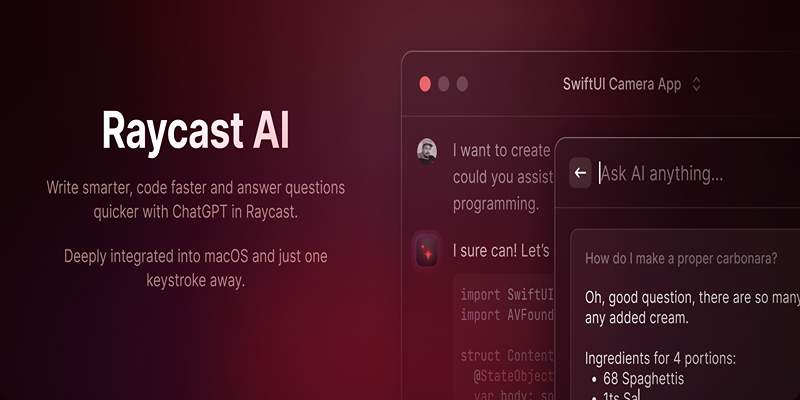As the open-source Linux multimedia landscape continues to evolve, PipeWire has rapidly emerged as a cornerstone technology for managing audio and video streams across a wide array of applications and devices. With the release of PipeWire 1.4.0, the project has introduced substantial advancements in compatibility, protocol support, and performance, reinforcing its position as the go-to multimedia engine on Linux.
This latest version not only strengthens PipeWire’s capability as a replacement for PulseAudio and JACK but also enhances its adaptability to embedded systems, high-performance computing platforms, and professional audio/video workflows. PipeWire 1.4.0 represents a mature and well-rounded update that pushes the boundaries of Linux media performance even further.
RISC-V Architecture Support
One of the most significant additions in PipeWire 1.4.0 is native support for the RISC-V CPU architecture. As an open-source instruction set architecture, RISC-V is quickly gaining traction in both academic research and commercial development. It’s already being adopted in low-power devices, development boards, and custom computing platforms.
With native RISC-V support, PipeWire becomes accessible to a new generation of devices, expanding its footprint beyond x86 and ARM systems. Developers working on RISC-V hardware now have a modern multimedia engine capable of supporting professional audio and video workflows, even in resource-constrained environments.
It aligns well with the broader Linux community’s push to embrace open hardware. PipeWire’s inclusion in the RISC-V ecosystem paves the way for streamlined integration of multimedia features in future open devices, particularly in embedded IoT, portable audio, and lightweight desktop environments.
MIDI2 Integration via Universal MIDI Packet (UMP)
Another standout feature in PipeWire 1.4.0 is support for MIDI2, the long-awaited update to the decades-old MIDI protocol. Implemented via the Universal MIDI Packet (UMP) specification, this upgrade provides significantly improved control resolution, timing accuracy, and expressive range for digital musical instruments and software.
Unlike traditional MIDI, which has limitations in terms of data size and responsiveness, MIDI2 allows for high-definition control messages, facilitating a new level of realism in digital music production. PipeWire's integration of UMP makes it compatible with modern controllers and software instruments, offering low-latency, real-time MIDI handling that is essential for live performance and studio production.
This enhancement turns PipeWire into a robust backend for music production environments on Linux, helping it appeal to audio professionals who require nuanced MIDI workflows that match or surpass those found on proprietary systems.
Bluetooth Enhancements

Bluetooth audio support has historically been one of Linux’s weaker points, often plagued by limited codec options and subpar device compatibility. PipeWire 1.4.0 brings meaningful improvements in this area with a focus on accessibility, quality, and protocol support:
- Broadcast Audio Profile (BAP): By enabling BAP, PipeWire now supports broadcast-style audio transmission to multiple Bluetooth receivers simultaneously. It is ideal for use cases like public audio announcements or shared wireless audio setups.
- ASHA (Audio Streaming for Hearing Aids): The inclusion of ASHA support dramatically improves accessibility, enabling direct wireless audio streaming to hearing aids, which benefits users with hearing impairments.
- G722 Codec Support: A staple in high-fidelity voice communication, G722 brings improved audio quality to VoIP, conferencing apps, and real-time communication tools.
These features allow PipeWire to better serve diverse audio needs, from everyday Bluetooth headphones to specialized hearing devices and professional-grade audio systems. The improved codec and device support enhances the overall user experience and provide a solid alternative to commercial operating systems in terms of wireless audio performance.
Advanced Audio and Video Processing Features
PipeWire 1.4.0 enhances audio/video synchronization and media processing capabilities, further refining its role in high-end multimedia environments:
- PTP (Precision Time Protocol) for RTP Streams: This new support enables exact clock synchronization across networked devices using RTP. It is particularly valuable in professional audio and broadcasting setups where even millisecond drift is unacceptable.
- FFmpeg-Based Videoconvert Plugin: The new plugin brings superior video conversion tools to PipeWire, leveraging FFmpeg’s robust codec library to handle diverse video formats and color profiles with better performance and wider compatibility.
- WebRTC2 and HDMI Improvements: Enhancements to WebRTC2 and HDMI routing result in more stable media playback, better screen-sharing capabilities, and smoother real-time conferencing.
These improvements solidify PipeWire’s capacity to support professional-grade multimedia applications, making it suitable not only for desktops but also for studios, collaborative workstations, and media-centric embedded devices.
System-Level Changes and Performance Refinements
PipeWire 1.4.0 introduces pipewire-pulse as a system service, a significant step for users transitioning from PulseAudio. This addition ensures better application compatibility, reduced latency, and more consistent stream management for apps still designed around PulseAudio interfaces.
Additional performance optimizations include:
- Enhanced Buffer Management: Fine-tuned buffer allocation reduces audio latency and improves real-time stability during high-load scenarios.
- Efficient Event Handling: Better scheduling and reduced overhead allow smoother interactions between applications and the audio stack.
- GStreamer Buffer Pool Integration: More intelligent buffer pooling strengthens PipeWire’s integration with GStreamer pipelines, improving efficiency in multimedia applications.
These backend improvements make PipeWire lighter, faster, and more dependable across varied system configurations, from low-end devices to high-performance workstations.
Developer and Configuration Improvements

PipeWire 1.4.0 includes developer-focused changes that simplify integration and improve runtime performance:
- SPA Macros Refactored to Inline Functions: This change improves maintainability and compiler optimization, leading to leaner binary outputs and more efficient runtime behavior.
- Optimized JSON Parsing: PipeWire’s configuration parsing has been streamlined for faster startup and better memory efficiency.
- Deprecation of client-rt.conf: Removing this outdated configuration file reduces clutter and simplifies setup, particularly for new deployments.
- Dynamic VBAN Stream Creation: Users can now create VBAN streams on demand, which enhances the flexibility of real-time network audio routing—particularly useful in collaborative and broadcast environments.
These changes reflect a more mature codebase, ready for widespread adoption across Linux distributions and adaptable to different use cases and system environments.
Conclusion
With PipeWire 1.4.0, the Linux multimedia stack takes a definitive leap toward performance, inclusivity, and adaptability. This release offers something for every segment of the user base—developers gain better tools and integrations, hardware vendors benefit from wider compatibility, and end-users experience smoother, higher-quality media across devices.
As Linux continues its climb in both consumer and enterprise domains, PipeWire’s role as a central multimedia backbone is now firmly established—and only growing stronger with every release.







